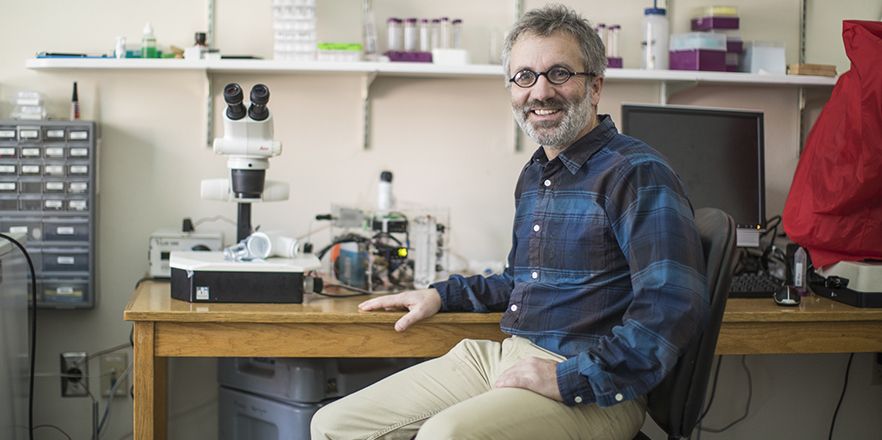Whitman Receives First Patent for New Lab Tool

The first product patent issued to Whitman College is based on an invention by Carl E. Peterson Endowed Chair of Science and Professor of Physics Douglas Juers. A commercial version of the device, named Watershed, was launched in the summer of 2018. By using Watershed, researchers like Juers can improve the overall quality and reproducibility of their data.
The device was borne out of difficulties Juers and his team of research assistants were having reproducing measurements in their lab due to variations in humidity.
"We would repeat the same experiment and get a slightly different result," Juers said. "We eventually determined that the variation was caused, in part, by dehydration of our samples while we manipulated them on our stereo microscope."
Unable to find a commercial product that provided the control they needed, Juers and his student assistants designed and built their own device. Working with Whitman Chief Financial Officer Peter Harvey, they applied for a patent and searched for a commercial partner, leading them to MiTeGen, a New York-based manufacturer and distributor of scientific equipment.
Students involved in the work include Christopher Farley '16 (physics, bio-engineering), Hailey Maeda '16 (biochemistry, biophysics and molecular biology) and Nick Wechter '16 (biochemistry, biophysics and molecular biology). Juers' father David, a retired chemical engineer, also helped troubleshoot one aspect of the project during a Thanksgiving visit.
The team's research was supported by the National Institutes of Health and focused on improving techniques in structural biology. Any advances that make progress in this field easier and more accessible can have significant applications to human health by improving basic understanding of the biology underlying various conditions and subsequently developing therapeutics.
"The device has become an indispensable part of our lab. We now only work with samples that are under controllable humid flow," Juers said. "This greatly reduces stress by slowing down the dehydration clock, allowing one to take more care during manipulations. The device should be helpful to anyone working with small samples sensitive to dehydration."